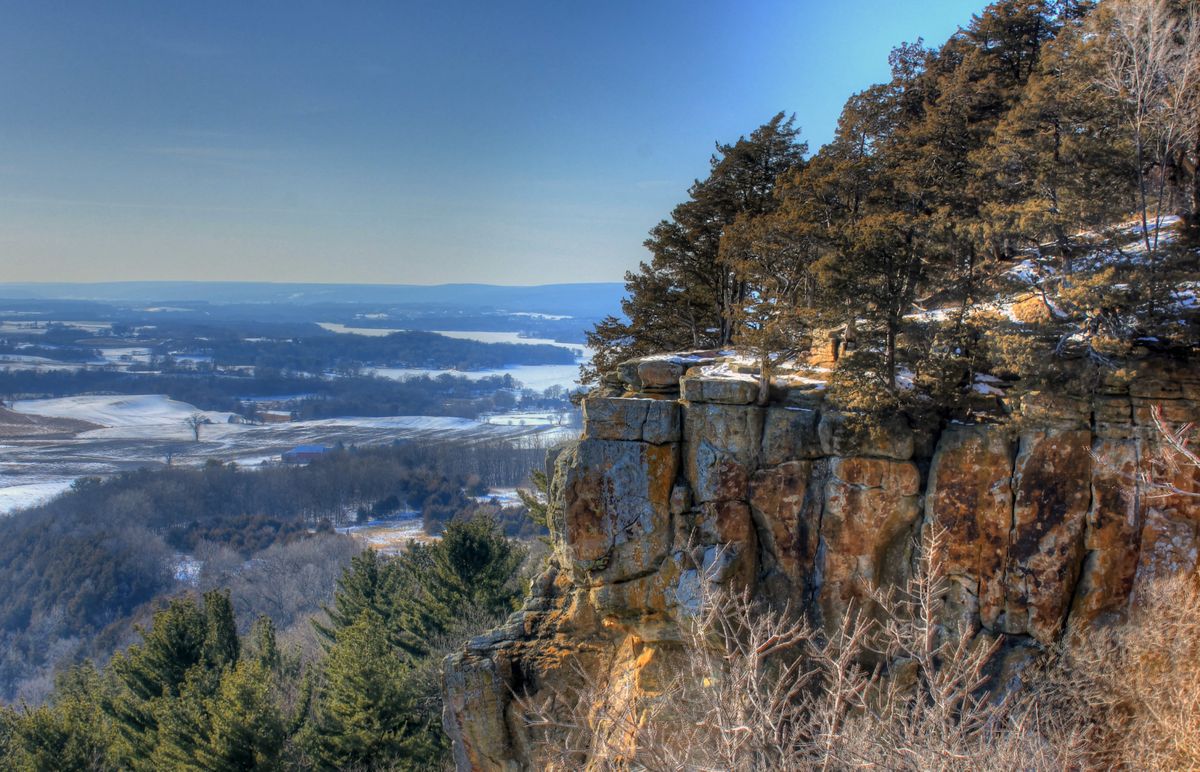Wisconsin’s Ice Age Trail And Its Ancient Trading Paths

Have you ever wondered what it would be like to walk along paths that ancient people once used for trade and travel? The Ice Age Trail in Wisconsin offers just that experience. This trail stretches over 1,000 miles, winding through forests, prairies, and small towns. It follows the edge of glaciers that shaped the landscape thousands of years ago. Along the way, you can see evidence of ancient trading routes used by Native Americans. These paths connected tribes and facilitated the exchange of goods and ideas. Whether you're a history buff or a nature lover, the Ice Age Trail provides a unique glimpse into the past while offering stunning natural beauty.
Wisconsin's Ice Age Trail: A Journey Through Time
The Ice Age Trail in Wisconsin offers a unique glimpse into the past, winding through landscapes shaped by glaciers thousands of years ago. This trail, stretching over 1,200 miles, not only showcases natural beauty but also traces ancient trading paths used by indigenous peoples. Let's explore some of the most fascinating spots along this historic route.
Glacial Formations and Scenic Views
The Ice Age Trail is renowned for its stunning glacial formations and breathtaking vistas. Each section of the trail offers something unique, making it a must-visit for nature enthusiasts and history buffs alike.
Devil's Lake State Park: Known for its dramatic quartzite bluffs and clear blue lake, this park offers some of the most picturesque views along the trail. The bluffs, formed over a billion years ago, provide a striking contrast to the lush forests below.
Kettle Moraine State Forest: This area features unique glacial landforms called kettles and moraines. Hiking through this forest, you'll encounter rolling hills, deep kettles, and serene lakes, all remnants of the last Ice Age.
Interstate State Park: Located on the Wisconsin-Minnesota border, this park showcases impressive glacial potholes and cliffs. The St. Croix River adds to the scenic beauty, making it a perfect spot for hiking and photography.
Ancient Trading Paths
Long before European settlers arrived, indigenous peoples used these trails for trade and travel. Walking these paths offers a connection to the rich cultural history of the region.
Aztalan State Park: This archaeological site was once a thriving Native American village. The park features reconstructed earthen mounds and stockades, giving visitors a glimpse into the lives of the people who once traded along these paths.
Effigy Mounds National Monument: Although not directly on the Ice Age Trail, this site is worth a visit. It features ancient mounds shaped like animals, built by indigenous peoples for ceremonial purposes. These mounds highlight the sophisticated culture and trade networks of the time.
Red Cedar State Trail: This trail follows an old rail line that once connected various trading posts. Today, it offers a scenic route along the Red Cedar River, with opportunities to spot wildlife and enjoy the peaceful surroundings.
Flora and Fauna
The diverse ecosystems along the Ice Age Trail support a wide variety of plant and animal life. Each season brings its own unique beauty, from spring wildflowers to autumn foliage.
Chequamegon-Nicolet National Forest: This vast forest is home to numerous species of birds, mammals, and plants. Hiking through this area, you might spot deer, black bears, or even a rare orchid.
Horicon Marsh: One of the largest freshwater marshes in the United States, Horicon Marsh is a haven for birdwatchers. The marsh supports over 300 species of birds, making it a prime spot for observing migratory patterns.
Rib Mountain State Park: Known for its towering granite peak, this park offers diverse habitats ranging from dense forests to open meadows. The varied terrain supports a wide range of wildlife, including foxes, owls, and wild turkeys.
Historical Landmarks
In addition to natural beauty, the Ice Age Trail passes by several historical landmarks that tell the story of Wisconsin's past.
Old World Wisconsin: This outdoor museum features historic buildings and reenactments that showcase the lives of early settlers. It's a great place to learn about the history and culture of the region while enjoying a scenic hike.
Milwaukee Riverwalk: While not part of the trail itself, the Riverwalk offers a glimpse into the city's industrial past. The walk features historic buildings, public art, and beautiful views of the Milwaukee River.
Pewit's Nest: This hidden gem features a series of small waterfalls and deep gorges carved by glacial meltwater. The area was once a popular trading spot for indigenous peoples, adding to its historical significance.
Discovering Wisconsin's Ice Age Trail
Wisconsin's Ice Age Trail offers more than just scenic beauty. It provides a glimpse into ancient trading paths that shaped the region's history. Hikers can explore glacial landscapes while walking in the footsteps of early traders. The trail's unique mix of natural wonders and historical significance makes it a must-visit for outdoor enthusiasts and history buffs alike.
Whether you're trekking through lush forests or crossing open prairies, the trail promises an unforgettable experience. Each step reveals a new layer of Wisconsin's past, connecting you to the land and its stories. So, lace up your hiking boots and set out on an adventure that blends nature with history. The Ice Age Trail awaits, ready to share its secrets and beauty with those who seek it.

